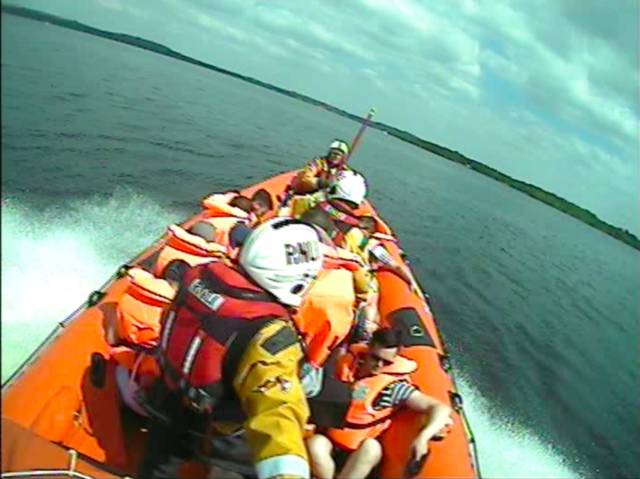At 1.45pm today, Lough Derg RNLI Lifeboat was requested to launch by Valentia Coast Guard, following a request for assistance from a cruiser with 9 people on board, which had grounded on rocks by Ryan's Point.
The lifeboat, with helm Eleanor Hooker, Dom Sharkey and Owen Cavanagh on board, launched at 2pm. Winds were westerly, Force 1/2, visibility was good.
At 2.10pm the lifeboat located the 40ft. vessel by Ryan's Point, inside the Mountaineer navigation mark.
An RNLI volunteer boarded the vessel and reassured everyone, all safe and unharmed, and asked them to put on their lifejackets. The RNLI crew member checked under the floorboards for any damage to the hull and found it intact. He put the ballast tanks on drain and carried out a visual survey of the rocks around the boat.
Meanwhile the lifeboat carried our soundings to determine depths and dangers close to the location. The lifeboat attempted to take the vessel off the shelf from its stern and from the bow, but she was stuck fast. At 3.02pm the lifeboat informed the Coast Guard that it was taking all 9 people and her RNLI crew member onto the lifeboat and transferring the casualties to Dromineer, where they would wait whilst, Lifeboat Operations Manage, Liam Maloney made arrangements for their boat to be re-floated.
On their return passage to Dromineer, the lifeboat had to advise another vessel that they would run aground if they held their course and did not round the Mountaineer Buoy. That vessel changed course and came back out onto the navigation channel.
The lifeboat returned to Station and was ready for service again at 3.40pm.
Lifeboat Operations Manager, Liam Maloney advises all boat users to 'stay within the navigation channels on the lake, and to study your charts before setting out from port'. 'This fine weather is to stay with us a while longer', he continued, 'remember to respect the water and think safety when in or around water'.






























































